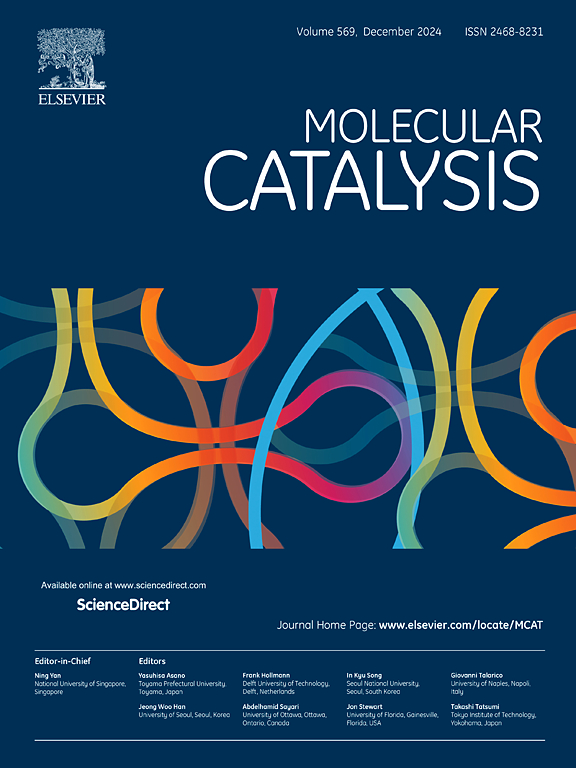机器学习驱动的NH3-SCR催化剂快速筛选与性能预测
IF 4.9
2区 化学
Q2 CHEMISTRY, PHYSICAL
引用次数: 0
摘要
传统的催化剂研究与开发主要依靠实验试错法,难以满足能源和环境领域对高效催化剂的需求。将机器学习应用于催化剂设计,可以实现催化剂的快速筛选,从而克服传统试错方法的局限性,解决影响催化剂研发的效率低、成本高的问题。本文报道了一个包含751组数据的催化数据库的开发,其中30个输入特征分为三类,如催化剂组成、制备条件和催化反应条件,以及NOx转化率和N2选择性作为输出特征。采用机器学习方法辅助选择性催化还原(SCR)催化剂的配方筛选和性能预测。研究发现,CatBoost模型在10个模型中表现最好,其R2、平均绝对误差(MAE)和均方根误差(RMSE)分别为0.999、0.006和0.008。利用SHapley加性解释(SHAP)方法得到了各输入特征对模型预测的重要性,结果表明,反应温度和Mn元素摩尔比对NOx转化率和N2选择性的影响最大。该研究对SCR催化剂的筛选、反应条件优化和性能预测具有指导意义。机器学习与实验方法的成功结合代表了一种有效的策略,可以加速催化剂的发现。本文章由计算机程序翻译,如有差异,请以英文原文为准。

Machine learning-driven rapid screening and performance prediction of NH3-SCR catalyst
Traditional research and development of catalysts mainly rely on experimental trial-and-error methods, which struggle to meet the demand for efficient catalysts in the energy and environmental fields. Applying machine learning to catalyst design can achieve rapid screening of catalysts, thus overcoming the limitations of the traditional trial-and-error methods and solving the problems of low efficiency and high cost affecting catalyst research and development. This paper reports the development of a catalytic database containing 751 sets of data, with 30 input features divided into three categories, such as catalyst composition, preparation conditions, and catalytic reaction conditions, along with NOx conversion and N2 selectivity serving as output features. A machine learning approach was used to assist in the formulation screening and performance prediction of selective catalytic reduction (SCR) catalysts. The Categorical boosting (CatBoost) model was found to exhibit the best performance among the 10 models explored, with R2, Mean absolute error (MAE), and Root mean square error (RMSE) values of 0.999, 0.006, and 0.008, respectively. The importance of each input feature for model prediction was obtained using the SHapley Additive exPlanations (SHAP) method, which showed that the reaction temperature and Mn elemental molar ratio had the greatest effect on NOx conversion and N2 selectivity. This study provides guidance for the screening, reaction condition optimization, and performance prediction of SCR catalysts. The successful integration of machine learning with experimental methods represents an effective strategy that can accelerate the discovery of catalysts.
求助全文
通过发布文献求助,成功后即可免费获取论文全文。
去求助
来源期刊

Molecular Catalysis
Chemical Engineering-Process Chemistry and Technology
CiteScore
6.90
自引率
10.90%
发文量
700
审稿时长
40 days
期刊介绍:
Molecular Catalysis publishes full papers that are original, rigorous, and scholarly contributions examining the molecular and atomic aspects of catalytic activation and reaction mechanisms. The fields covered are:
Heterogeneous catalysis including immobilized molecular catalysts
Homogeneous catalysis including organocatalysis, organometallic catalysis and biocatalysis
Photo- and electrochemistry
Theoretical aspects of catalysis analyzed by computational methods
 求助内容:
求助内容: 应助结果提醒方式:
应助结果提醒方式:


